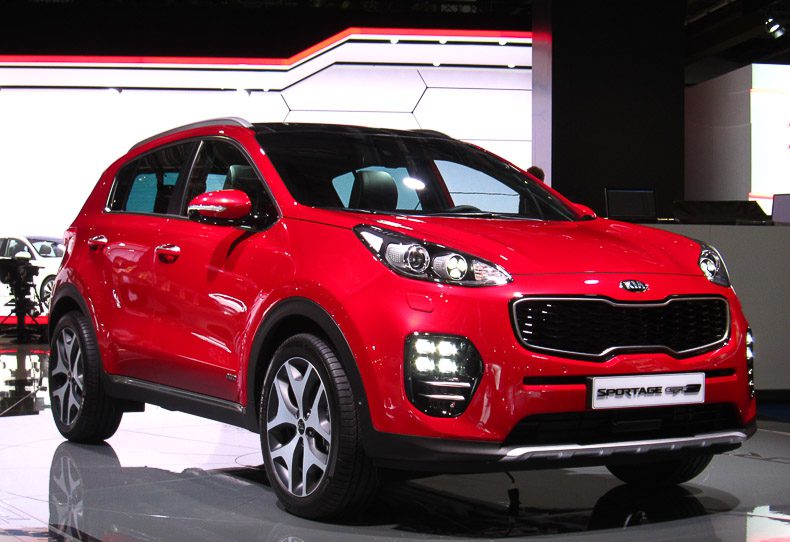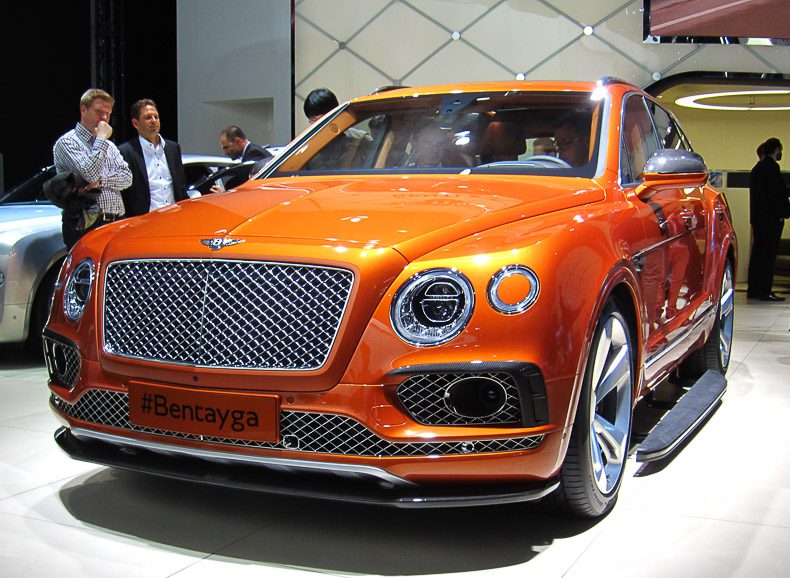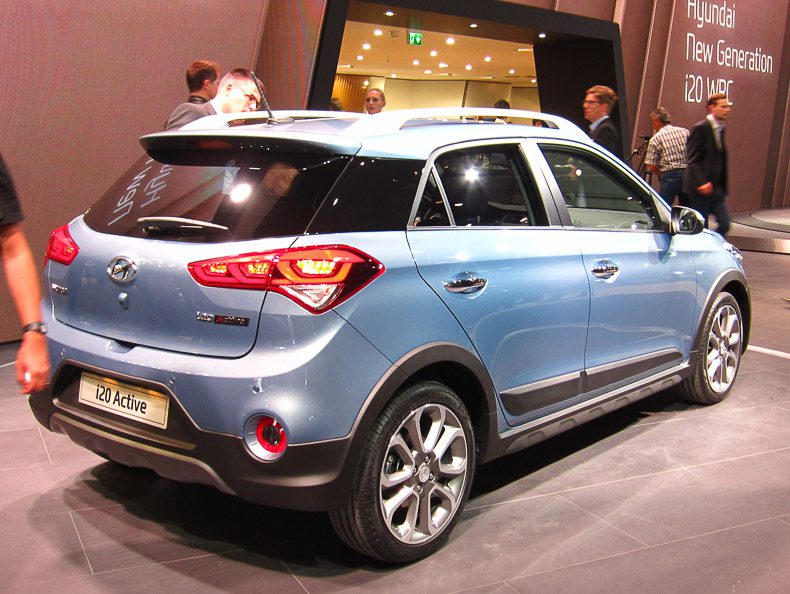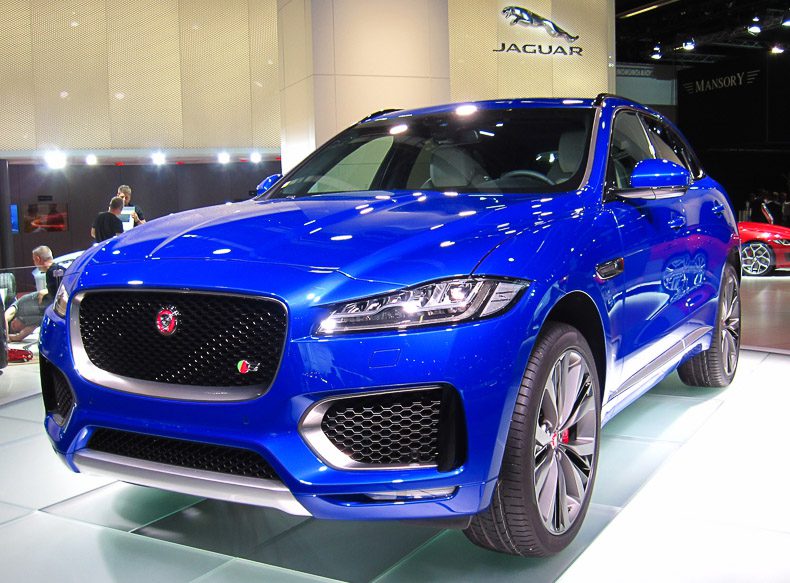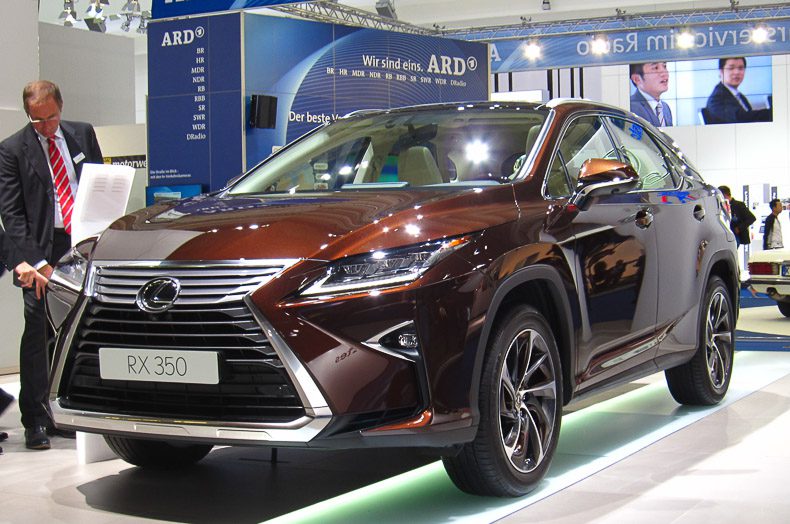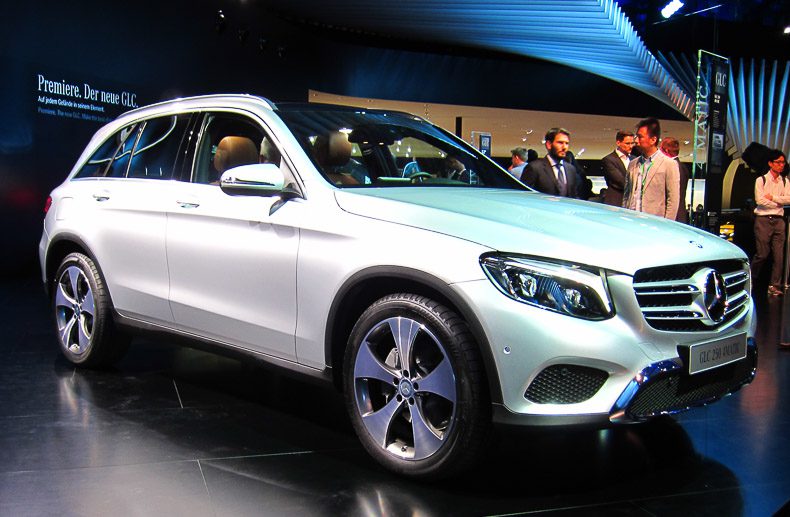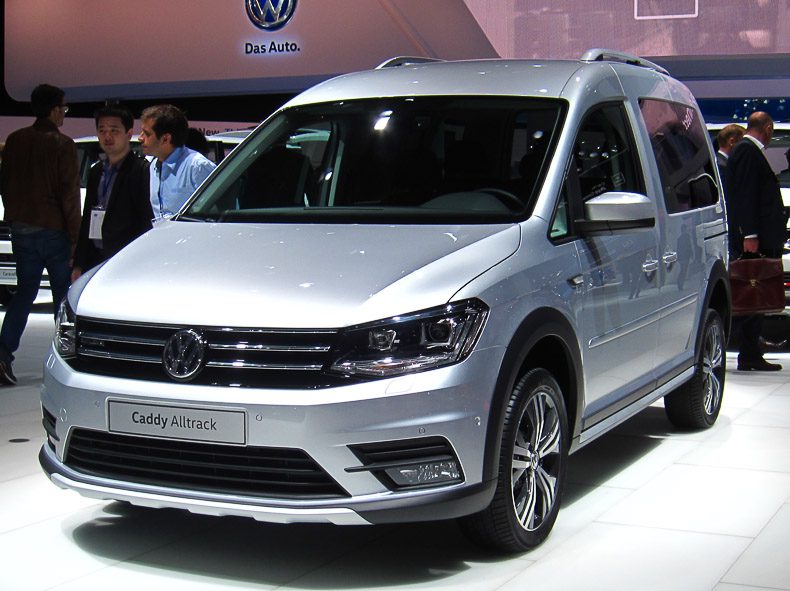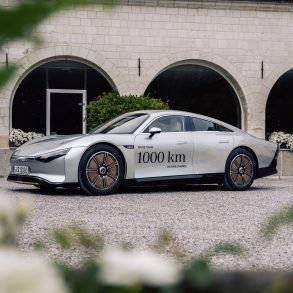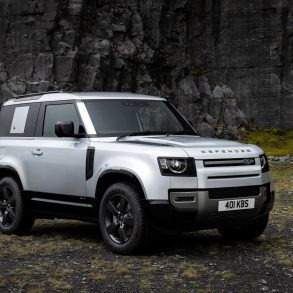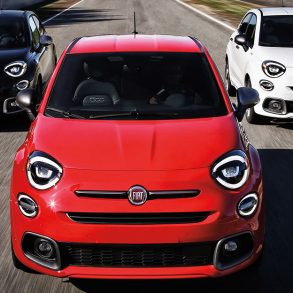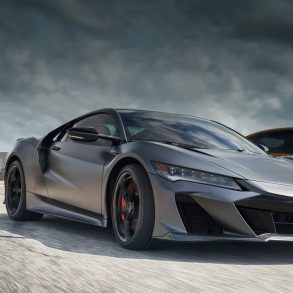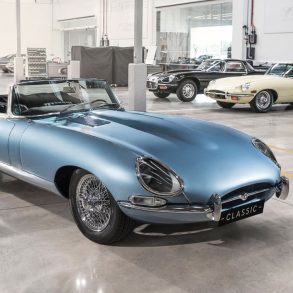Bentley Bentayga
The Bentayga is the fastest, most powerful, most luxurious and most exclusive SUV in the world according to Bentley, a statement which could very well be true. The production version of the EXP 9 F Concept is based on the platform of the new Audi Q7, but designed, engineered and handcrafted in Crewe. It sits on the 2,992 mm wheelbase of the Q7, while the overall car length is 5,141 mm, its width is 1,998 mm and height 1,742 mm. It can be selected with four- or five-seat configurations. The four-seat version features two individual rear seats that adjust in 18 different ways and include massage and ventilation functions as well as footrests. The storage space features a leather-trimmed folding seat that matches the style of the cabin seats, according to Bentley “Ideal for those wishing to stop for a moment and enjoy a spectacular outdoor environment or pursuit”. A 6.0-litre twin-turbocharged W12 engine with a power output of 608 hp and 900 Nm torque powers the SUV, with which it could achieve a top speed of 301 km/h and accelerate from 0-100 km/h in 4.1 seconds. The engine is mated to an eight-speed transmission, while the CO2-emissions are 292 g/km. In the future Bentley will launch diesel and hybrid variants.
BMW X1
BMW launched the second generation of its X1 compact crossover in Frankfurt after selling more than 730,000 units of the first generation X1. BMW made a switch from the current rear-wheel drive to a front-wheel drive platform, which is shared with the Mini hatchbacks and Clubman and the BMW 2 Series Active Tourer and Gran Tourer. The new X1 sits on a wheelbase, which decreased with 90 mm to 2,670 mm. It became slightly shorter with a length of 4,439 mm (-38 mm), but its width of 1,821 mm (+23 mm) and especially its height of 1,598 mm (+53 mm) grew considerably, giving it a higher stance which is more similar to its competitors and also providing a more spacious cabin. And it quite shows, with more knee room (+37 mm) in the rear and a luggage capacity, which increased from 420-1,350 litres to 505-1,550 litres. Notable is its drag coefficient of just 0.29.
The range starts with two three-cylinder engines, the sDrive18i has a 1.5-litre turbocharged petrol unit, producing 136 hp and a fuel consumption of 5.1 L/100 km (CO2-emissions of 119 g/km), whereas the sDrive16d has a 1.5-litre diesel, generating 116 hp. Its fuel consumption is 3.9 L/100 km and the corresponding CO2-emissions are 104 g/km. More powerful petrol versions are powered by a 2.0-litre engine (sDrive20i, xDrive25i) and power outputs of 192 and 231 hp respectively. The xDrive18d, xDrive20d and xDrive25d are powered by a 2.0-litre four-cylinder diesel engine, which produce 150, 190 and 231 hp respectively. The engines link up with either a six-speed manual gearbox or an eight-speed Steptronic automatic transmission. A new feature to the X1 is the BMW Head-Up Display, which projects driving-related information directly onto the windscreen. Furthermore, it comes with features like Stop & Go function, Lane Departure Warning, Traffic Jam Assistant, Collision Warning and Pedestrian Warning with City Braking function. The new BMW X1 goes on sale in October.
Borgward BX7
The German carmaker Borgward returned after over 50 years of inactivity at the IAA Frankfurt 2015 and unveiled the BX7 SUV. Actually it is now more of a Chinese carmaker with a German brand, since the cars will be produced in China. Borgward is scheduled to be launched in Europe within the next two years; it will launch its first vehicles to the Chinese and other emerging markets in the first half of 2016. Borgward, which is part of the Chinese state-owned car manufacturer BAIC, has set a medium-term sales target of well over 500,000 vehicles a year. The product portfolio will be continuously expanded over the coming years. Borgward will launch at least two new models for market launch every year. The BX7 leads the brands comeback and is powered by a 2.0-litre turbocharged petrol engine, producing 224 hp and 300 Nm of torque. Said engine is mated to a seven-speed dual-clutch transmission.
Alternatively, it comes with a plug-in hybrid drivetrain, which has a combined power of 401 hp and capable of an all-electric range of 55 km. The luggage capacity is 1,344 litres when the rear seat backrests are folded. The BX7 comes in two variants: the base version and the sportier TS variant with a unique set of bumpers, 21-inch wheels and aluminium roof rails and a flat-bottomed steering wheel. An inspection shows that the fit and finish of the model is still below-par, the brand still has some work to do if it truly wants to make an impact against competitors, ranging from the Hyundai Santa Fe to the Mercedes-Benz GLC.
DS 4 facelift & Crossback
Formerly known as Citroën DS4, the DS 4 is the second DS model after the DS 5 to feature the new front grille and bumper. DS also launched the rugged DS 4 Crossback, which features a 30 mm higher ride height, black wheels, wheel arch trim, a black front end and spoiler, grey roof bars and black exterior rear view mirrors. Earlier this year the engine range was already updated, it still features the e-THP 1.2 turbocharged three-cylinder petrol engine (130 hp), the 1.6 THP with 165 or 210 hp power outputs, and the 1.6 BlueHDi (120 hp) and 2.0 BlueHDi (150/180 hp) diesel engines.
Ford Ranger facelift
The refreshed Ford Ranger made its European debut at the IAA Frankfurt. With a new look, technologies and improved engines it should better compete with the new Mitsubishi L200 and Nissan NP300 Navara, which were also shown for the first time in Europe, and the new Toyota Hilux, which will be launched in Europe next year. Moreover, Volkswagen is readying a refreshment for the Amarok, while Renault (Alaskan) and Mercedes-Benz will launch Nissan NP300 Navara-based pick-ups and Fiat its own version of the Mitsubishi L200 in two years from now. In Ford’s 20 largest European markets, sales of the Ranger have steadily increased since the last generation was launched in late 2011, with 21,600 units sold in 2014, more than double those achieved in 2012, and 16,700 units sold in the first eight months of 2015. The 2.2 TDCi diesel engines have been improved, with increased power output (available in 130 and 160 hp variants) and improved fuel efficiency, which went significantly down in the 160 hp version from 7.8 l/100 km and 206 g/km CO2 to 6.5 l/100 km and 171 g/km. As before, the 3.2 TDCi 200 hp five-cylinder diesel topples the range. On the outside, the new Ranger features new headlamps, bumpers, side panels, and Ford has given the interior a total revamp too, including the SYNC 2 connectivity system, which features an 8-inch touchscreen. The top-spec Ranger Wildtrak is on display at the Ford stand. The new Ranger will be available from late 2015.
Hyundai i20 Active
In the absence of a true compact crossover, which is still some years away, Hyundai launched the i20 Active. The rugged version of the five-door i20 should compete with the Volkswagen CrossPolo. It standouts from the range thanks to the matt silver sill tread plates, lower edges of the side sills, roof railing and hubcap, black plastic fictures along the doorsills, bumpers and wheel arches and new bumpers, fog lamps and alloy wheels. Because of those changes, the i20 Active is 30 mm longer, 26 mm wider en 55 mm higher than the standard five-door i20. Hyundai changed the suspension specifically for the Active and its ground clearance is 20 mm higher.
The launch of the i20 Active also marks the introduction of the new 1.0 T-GDI turbo petrol engine, which was first launched in the refreshed Kia cee’d. With the new engines, Hyundai finally addresses the criticism on the existing petrol engines, which were neither powerful nor efficient. The 1.0 T-GDI comes in 100 and 120 hp power outputs. In the future the Hyundai i20 range will be further expanded, with both an i20 N, which should compete with the Renault Clio RS, and a Wagon, aimed to compete with the Skoda Fabia Combi and both scheduled to be launched next year.
Hyundai Santa Fe facelift
Although specific information has yet to be revealed, Hyundai launched the refreshed Santa Fe too. Both the exterior and interior have been subtly improved with a new set of bumpers, LED-technology for the headlamps and tail lamps and improved interior quality. Safety and comfort features like Autonomous Emergency Braking, Rear-Cross Traffic Alert, Smart Cruise Control, Blind Spot Detection, Lane Change Assist and High Beam Assist have been added to the equipment list. It still comes with 2.4 GDI petrol and 2.0 CRDi and 2.2 CRDi diesel engines.
Jaguar F-Pace
The new Jaguar F-Pace is Jaguar’s first SUV and should also replace the XF Sportbrake with the demise of the model. The production version of the C-X17 Concept is visually inspired by the F-Type. The F-Pace sits on a 2,874 mm wheelbase and its length is 4,731 mm, its width is 1,936 mm and the height is 1,652 mm. With those dimensions it competes with the likes Mercedes-Benz GLC, also debuting in Frankfurt, and the Audi Q5, BMW X3, Lexus NX and Volvo XC60. The boot capacity of 650-1,740 litres is class-leading according to Jaguar. Indeed it offers plenty of space, however similar to the XE and XF its interior sensory quality cannot quite match its German competitors. In terms of driving engagement it will probably outpace its rivals. The range starts with a 2.0-litre four-cylinder diesel engine from the Ingenium family with 180 hp and 430 Nm torque, with its combined fuel consumption of 4.9 l/100 km and CO2-emissions starting at 129 g/km. The 3.0 V6 AWD diesel engine produces 300 hp and no less than 700 Nm torque. For now there is just one petrol engine, the supercharged 3.0-litre V6 available in 340 hp and 380 hp variants, which accelerates from 0-100 km/h in just 5.5 seconds. The drag coefficient is 0.34. It comes with a Head-Up Display, while all versions fitted with the eight-speed automatic transmission are fitted as standard with the All Surface Progress Control, a low speed cruise control that helps to cope with low traction situations.
Kia Sportage
The fourth generation Kia Sportage had its worldwide debut in Frankfurt. Kia managed to sell 97,000 units of its Sportage in Europe last year. It accounted for 27.5% of Kia sales in Europe, making it the best-selling model of the Korean carmaker. The new Sportage maintains its profile; the new front with the higher positioned headlamps and wider, lower grille features the biggest change to the car’s design. The Sportage has a 30 mm longer wheelbase (now 2,670 mm), 40 mm greater overall length (to 4,480 mm), while the width of 1,855 mm and height of 1,635 mm are identical to its predessor. Thanks to the larger body dimensions it offers more passenger space and improved cargo space of 503 litres. It comes with two petrol and two diesel engines, which are identical to the powerplants of its sibling Hyundai Tucson. The 1.6 GDI (132 hp) has been carried over from the third generation Sportage. New is the range-topping 1.6 T-GDI (177 hp) engine, which replaces the 2.0 GDI. The engine is based on the same unit powering the cee’d/pro_cee’d GT. The 1.7 CRDi (115 hp) has also been carried over, the 2.0 CRDi, which comes in 136 and 184 hp power outputs, is upgraded in terms of fuel economy, performance and NVH. New to the range is the DCT seven-speed dual-clutch transmission, which is exclusively available in combination with the 1.6 T-GDI engine.
The new Sportage, which is 4 cm longer than its predecessor, offers more passenger space thanks to a 3 cm longer wheelbase, whereas its luggage capacity has been increased by 38 litres to 503 litres. The Sportage comes with available systems like Autonomous Emergency Braking, Lane Departure Warning System, Lane Keeping Assist System, High Beam Assist, Speed Limit Information Function, Blind Spot Detection and Rear Cross Traffic Alert. The car indeed impresses with a spacious cabin and good interior quality, which seems to be slightly more upmarket than in the Hyundai Tucson. Sales of the new generation Sportage will start across Europe in the first quarter of 2016.
Lexus RX
Lexus launched the fourth generation RX as a European premiere after its debut in New York this spring. It features a more dramatic outer design, with the Spindle grille and mix of sharp creases and curves similar to the NX, IS and RC. Overall length of the Lexus RX has grown by 120 mm to 4,890 mm, its width is up 10 mm to 1,895 mm and the height of 1,690 mm (RX 450h: 1,685) is identical to its predecessor. The wheelbase has been increased by 50 mm to 2,790 mm, which has resulted in improved legroom. The new RX is available with three engines depending on which European market: the RX 200t is available in selected markets in Europe and produces 238 hp. Its fuel consumption is a far from impressive 9.8-9.9 l/100 km. The RX 350 (available in some East European markets) has a direct-injected 3.5 V6 engine (300 hp).
Available in all markets is the RX 450h. It features the reengineered 3.5 V6 direct-injected petrol engine (263 hp) and the total output of the hybrid powertrain is 313 hp. Its average fuel consumption is 5.2 l/100 km and CO2-emissions start at 120 g/km, a reduction of 20 g/km compared to its predecessor. The new Lexus RX comes with numerous safety-enhancing technologies either as standard or optionally available.
Mercedes-Benz GLC
After its world premiere at the Indonesia Motor Show last month, the successor of the GLK had its European debut at the IAA Frankfurt. With the GLC Mercedes-Benz abandoned the rectangular off-road look of its predecessor, which couldn’t quite make an impact to the BMW X3 and Audi Q5 in the sales charts. Thanks to the aerodynamically more efficient shape, its Cd value has been reduced from 0.34 to 0.31. The GLC comes in three versions: the base version, a version optimized for off-road use with a larger angle of approach/departure and the AMG version. The wheelbase has been increased by no less than 118 mm, providing more space for the driver and its passengers. The load capacity of 580 litres (up 80-110 litres) and maximum luggage compartment of 1,600 litres (up 50 litres) grew considerably as well. Despite the larger outer dimenions, the vehicle’s weight has been cut by 80 kilograms.
From start the GLC will be available with a 2,0-litre petrol engine, the GLC 250 4MATIC with a power output of 211 hp and 350 Nm torque. The fuel consumption of 6.5 l/100 km and the corresponding CO2-emissions of 152 g/km have been reduced by 12 percent. It also comes with the 2,1-litre diesel engines in the GLC 220 d 4MATIC (170 hp) and GLC 250 d 4MATIC (204 hp) with a reduction of fuel consumption of 19 percent to 5.0 l/100 km and CO2-emissions of 129 g/km. Those engines come with the 9G-Tronic automatic transmission as standard. The current range-topper is the GLC 350 e 4MATIC plug-in hybrid with a system output of 211 + 116 hp. CO2-emissions are just 60 g/km, its top speed is 235 km/h and should be able to accelerate in 5.9 seconds to 100 km/h. Said mill is coupled to the 7G-Tronic Plus automatic transmission. The GLC features the Agility Control suspension as standard and is optionally available with Air Body Control for better off-road capabilities. The Mercedes-Benz will soon launch the GLC Coupé, which should compete with the BMW X4.
Mitsubishi Outlander facelift
Mitsubishi showcased the refreshed Outlander for the first time in Europe. It is the first Mitsubishi to feature the Dynamic Shield design language, with a more dramatic front grille, headlamps, bumpers and tail lamps. On the inside, the interior sensory quality should have been improved, while it has been fitted with a new steering wheel. The engine line-up has been improved too, with the 2.0-litre petrol now emitting only 139 g/km of CO2 (-13 g/km), the popular PHEV plug-in hybrid has seen a drop of 2 g/km to 42 g/km CO2, while the existing 2.2 DI-D diesel engine completes the range. Other improvements of the Mitsubishi Outlander include the improved sound insulation, CVT transmission and shock absorbers, increased bodyshell rigidity and an improved multimedia system, which can be used more intuitively.
Skoda Rapid Spaceback ScoutLine
Skoda launched the ScoutLine accessory package for the Rapid Spaceback, which should give the hatchback a rugged look thanks to the matte-black plastic fixtures along the doorsills, bumpers and wheel arches, and a silver finish for parts of the front bumper and exterior mirror housing. The ScoutLine is available with all drivetrains of the Rapid, with the TSI petrol engines ranging from 90 to 125 hp and the TDI diesel engines with 90 or 116 hp. Sales of the Skoda Rapid ScoutLine have already started.
Suzuki Vitara S
Apart from the all-new Suzuki Baleno, Suzuki also launched the Vitara S. The Vitara S is the first Suzuki to feature the new 1.4-litre BoosterJet four-cylinder turbocharged direct-injection petrol engine. It delivers 140 hp of power and 220 Nm of torque, well above the Vitara 1.6 petrol mill (120 hp/156 Nm). Fitted with AllGrip AWD, its fuel efficiency is 5.4 l/100 km and CO2-emissions are as low as 127 g/km. The Vitara S is distinguishable from the range by a new slotted grille, inspired by the iV-4 concept car that actually previewed the Suzuki Vitara at the IAA Frankfurt 2013.
Toyota RAV4 facelift & Hybrid
Toyota launched no less than two new Hybrids for the European market: the Prius, which had its global launch in Frankfurt, and the RAV4 Hybrid, which had its European premiere. The launch of the RAV4 Hybrid is combined with a facelift and improved engine line-up. The refreshed RAV4 features new headlamps, tail lamps, bumpers, improved interior sensory quality and better NVH (Noise, Vibration and Harshness) levels, thanks to improved sound insulation. Other measures should have enhanced the ride comfort and driver involvement. A new 2.0-litre diesel engine, which was first launched in the Avensis and is developed by BMW, develops 143 hp of power and 320 Nm of torque and its CO2-emissions dropped to 123 g/km. The engine replaces both the ageing 2.0 D-4D and 2.2 D-4D diesel mills. The 2.0-litre petrol unit has also been improved and now offers 151 hp and CO2-emissions of 149 g/km when fitted with the CVT transmission.
The Toyota RAV4 has now also been fitted with the powerplant of the Lexus NX 300h: the RAV4 Hybrid. It features the same 2.5-litre Atkinson Cycle petrol engine combined with an electric nickel-metal battery motor. The E-CVT transmission is fitted as standard. The total system power is 197 hp and its CO2-emissions are as low as 115 g/km for the front-wheel drive version and 119 g/km with AWD. According to Toyota, hybrids accounted for 33 percent of all Yaris sales and even 55 percent of Auris sales, and with those models attracting higher levels of conquest sales from other brands, it obviously wants to improve its market position in the C-SUV segment.
Volkswagen Tiguan
Volkswagen launched the all-new second generation Tiguan at the IAA Frankfurt after selling already 2.64 million units of its first generation model. Four variants are on display at the German auto show, the standard on-road model, the off-road version, which is specifically tuned for off-road use, the sportier R-Line and the Tiguan GTE with a plug-in hybrid drivetrain, which will become only the second plug-in hybrid in its class after the Mitsubishi Outlander PHEV. Compared to its predecessor, the weight of the Tiguan has been reduced by over 50 kg. It is also 6 cm longer (at 4.49 metres), 3 cm wider and 3 cm lower than before. Thanks to the 8 cm longer wheelbase (at 2.67 metres), passengers have 3 cm more space for their knees. Moreover, it offers 615 litres of luggage space; when the rear seat backrests are folded, its capacity increases to 1,655 litres, a gain of 145 litres. The new Tiguan indeed impresses with good interior material quality and space, while both its exterior and interior design are a great leap forward.
Specific information about the fuel efficiency hasn’t been revealed yet, but they are up to 24 percent more fuel-efficient than before. A range of eight engines with power outputs ranging from 115 to 240 hp is available. The Volkswagen Tiguan GTE is fitted with the plug-in hybrid drivetrain of the Passat GTE, with a system power of 218 hp and CO2-emissions of just 49 g/km. Safety features including Front Assist with City Emergency Braking and Pedestrian Monitoring, Lane Assist and the Automatic Post-Collision Braking System all come as standard. A seven-seater with a longer wheelbase, aimed at the North American and Chinese markets and a Coupé with a lower roofline are also on the cards.
Volkswagen Caddy Alltrack
Earlier this year Volkswagen launched the refreshed Caddy. The Caddy Alltrack is the rugged version of the Caddy and replaces the Cross Caddy. Like its predecessor it is available both in passenger car and panel van formats. The exterior of the Caddy Alltrack features matt silver sill tread plates, black trim panels on the wheel arches and black side sills and the lower edges of the bumpers. The Volkswagen Caddy Alltrack has underbody protection and is also optionally available with 4Motion all-wheel drive. It comes with a wide range of petrol, diesel and CNG-engines from the existing line-up.

